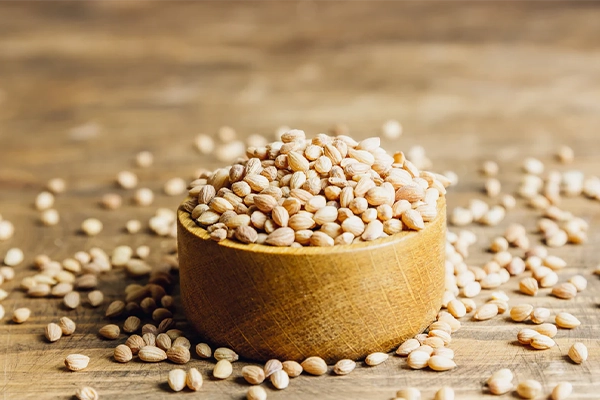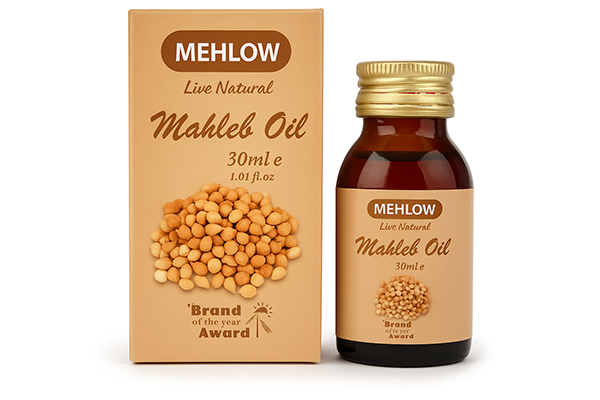What is mahleb spice? This rare ingredient offers a flavor unlike any other — warm, slightly sweet, and subtly bitter. Its aroma evokes hints of almond, vanilla, and cherry, with a floral undertone that gently lifts both sweet and savory dishes.
When freshly ground, mahleb spice delivers a soft fragrance reminiscent of marzipan and rosewater. Just a small pinch is enough to enrich pastries, breads, and traditional desserts without overwhelming the palate.
Many first experience its taste through holiday breads like tsoureki or choreg, where it plays a subtle yet essential role. With growing global interest, it’s now finding its way into ice cream, sauces, and modern fusion recipes, admired for its delicate and aromatic complexity.
Where Does Mahleb Come From?
The origins of this fragrant spice trace back to the rugged, sun-drenched regions of the Middle East, Central Asia, and Southern Europe. It is derived from the St. Lucie cherry tree (Prunus mahaleb), a hardy plant that thrives in arid, rocky soil and can be found across countries like Iran, Syria, Turkey, Armenia, and Greece. Although the tree produces small, black cherries, the real treasure lies within: the seed kernel hidden inside each fruit’s stone.
These seeds are harvested by hand, then sun-dried and carefully cracked open to access the aromatic core. The inner kernel is ivory-colored and extremely hard, requiring precision grinding to release its distinct aroma and flavor. This ingredient has been cherished for centuries in traditional cultures, where it was considered not only a flavorful addition to baked goods but also a natural remedy with potential health benefits.
In Iran, where the climate and soil conditions are ideal, this crop is grown with care and passed down through generations of farmers. Iranian varieties are particularly prized for their intense fragrance, high oil content, and consistent quality — making them a top choice in both regional and international markets.
Over time, as global cuisine has evolved and embraced lesser-known ingredients, interest in this ancient seed has grown well beyond its geographic roots. It is now found in gourmet shops and spice markets across Europe, North America, and the Gulf region. What was once a closely guarded tradition is now becoming a global delicacy — valued by chefs, health-conscious consumers, and exporters alike.

What Does Mahleb Taste Like?
The flavor profile of this ancient spice is both subtle and memorable. Often described as a blend of bitter almond, cherry, and vanilla, it brings a warm, aromatic complexity to both sweet and savory dishes. The taste is delicate — not overpowering — with floral undertones that enhance baked goods and pastries without overwhelming the palate.
When freshly ground, the seed kernel releases a soft scent reminiscent of marzipan and rosewater. This gentle aroma signals its freshness and the presence of essential oils, which are often lost in pre-ground versions. That’s why professional bakers and chefs prefer to grind the kernels just before use, ensuring maximum flavor and fragrance.
In traditional cuisine, this spice is a key ingredient in festive breads like tsoureki in Greece, choreg in Armenia, and a variety of celebratory sweets across the Levant and Iran. The unique flavor it adds cannot be replicated by any other spice, which is why it holds a special place in cultural baking practices.
With growing awareness of lesser-known ingredients, culinary creatives around the world have started experimenting with this kernel in new ways. From infusing custards and syrups to flavoring ice creams, puddings, and even spiced meat rubs, its versatility continues to impress. While only a small amount is needed in most recipes, its impact is unmistakable.
The overall experience it delivers — warm, nostalgic, and slightly exotic — is what makes this ingredient a favorite among those exploring traditional flavors with a modern twist. It’s not just a spice; it’s a signature touch that connects the kitchen to centuries of heritage.
Traditional Uses of Mahleb
For centuries, Mahleb has been an essential part of traditional cuisine across the Middle East, Eastern Mediterranean, and parts of Central Asia. This ancient spice was cherished not only for its unique aroma and flavor, but also for its symbolic presence in cultural celebrations, religious holidays, and family traditions.
In Greek, Armenian, and Syrian baking, Mahleb is most famously used in festive breads such as tsoureki, choreg, and ka’ak. These ceremonial pastries, often prepared for Easter, Christmas, or weddings, gain their signature soft texture and warm aroma from the inclusion of this special spice. The subtle notes of cherry, almond, and vanilla within the kernel perfectly complement the richness of buttery doughs.
In Persian and Turkish traditions, it has also found its place in sweets and halva-style desserts. Some regions even grind the seeds with sugar and nuts to create traditional herbal remedies, believing it supports digestion and reduces inflammation.
Beyond sweet dishes, one of the classic Mahleb spice uses includes flavoring meat marinades and yogurt-based sauces. Its fragrant profile pairs well with lamb, poultry, and soft cheeses, offering depth and subtle bitterness to savory recipes.
While modern chefs might ask, what is Mahleb, older generations know it by instinct — a spice that links taste to memory. In many homes, especially across Iran and the Levant, it is still ground fresh using a mortar and pestle, preserving its natural oils and cultural authenticity.
Today, as the spice gains global attention, it continues to serve as a culinary bridge between the past and present. Whether baked into a traditional bread or infused into a contemporary dish, Mahleb remains a timeless symbol of flavor, warmth, and heritage.
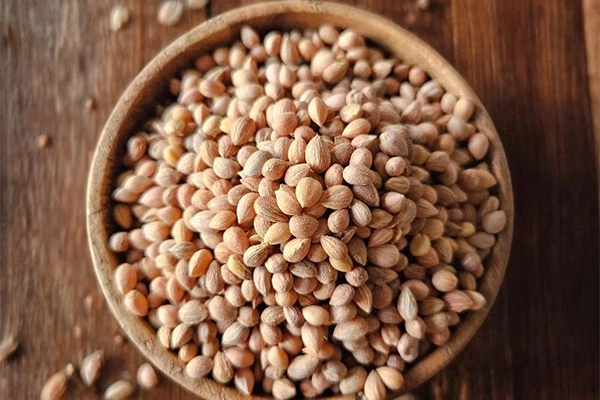
Mahleb in Modern Cuisine
As global culinary trends move toward rediscovering traditional ingredients, Mahleb has found a new home in contemporary kitchens. No longer limited to regional breads and pastries, this centuries-old spice is now being reimagined by gourmet chefs, artisanal bakers, and innovative home cooks alike.
Its unique blend of floral, nutty, and slightly bitter notes makes it a versatile ingredient in both sweet and savory recipes. In modern baking, it’s used to elevate cookies, biscotti, and cakes with a depth of flavor that feels both nostalgic and refined. Just a small pinch of this ground kernel can enhance doughs, fillings, and even whipped creams.
Among professional chefs, one of the more creative Mahleb spice uses includes infusing it into syrups, custards, and ice cream bases. It adds a gentle complexity that pairs beautifully with ingredients like honey, citrus, cardamom, and rosewater. Some cafés and dessert bars in Europe and the Gulf region have even started offering Mahleb lattes and infused milk drinks — giving new life to an ancient flavor.
In savory applications, this spice works well as a background enhancer in meat rubs, lentil stews, and spiced rice dishes. Its aroma deepens when lightly toasted, allowing it to blend seamlessly into sauces and soups. While it remains unfamiliar to many outside traditional cultures, those asking what is Mahleb are often surprised by how easily it fits into contemporary menus.
Modern cuisine is all about storytelling through flavor, and this seed — with its rich heritage and adaptable taste — adds both character and authenticity to the plate. By balancing tradition with innovation, Mahleb has proven that it belongs not just in heritage recipes, but in the future of food.
Mahleb Seed Benefits
While prized for its rich aroma and culinary charm, Mahleb also offers a surprising range of nutritional and wellness benefits. This seed has been used for centuries not only as a flavoring agent but also as a natural remedy in traditional herbal medicine across Persia, the Levant, and Anatolia.
One of the primary health advantages of this aromatic kernel is its antioxidant content. The seed contains beneficial compounds such as coumarin, linoleic acid, and essential oils that help protect the body from oxidative stress. These elements can support cellular health, reduce inflammation, and slow down signs of aging.
Another reason this ingredient is valued is its digestive benefits. In many cultures, ground Mahleb is mixed with honey or water and consumed to relieve bloating, improve gut function, and calm the stomach. Its mild bitterness stimulates digestion and has been used as a tonic after heavy meals.
The kernel is also a natural source of fiber, calcium, and iron. These nutrients contribute to bone health, circulation, and overall metabolic function. A small quantity of this spice can offer micronutrients that support energy levels, blood quality, and immune defense.
Some studies suggest that consuming Mahleb-infused foods may help with regulating blood sugar and reducing bad cholesterol levels — although more scientific research is still needed in this area. Regardless, it is widely regarded as a spice that not only flavors food but also enhances physical well-being.
As more consumers seek functional foods and natural ingredients, those discovering what is Mahleb often find it to be more than just a culinary curiosity — it’s a seed with centuries of healing history and nutritional value.
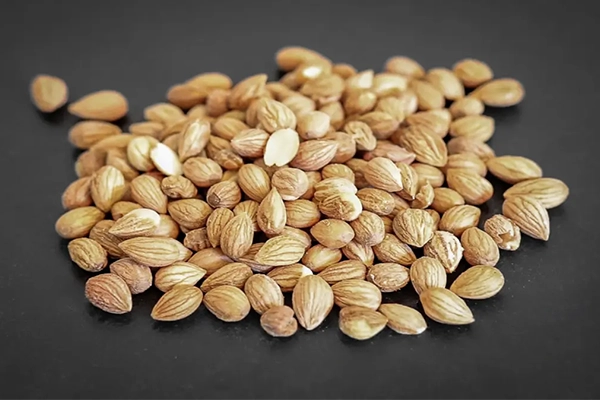
Is Mahleb Safe to Eat?
Yes — when used in moderation and from trusted sources, Mahleb is generally safe for culinary use and widely consumed across many cultures. However, like many spices derived from seeds and pits, it’s important to understand how it’s processed and how much is appropriate to use.
The kernel inside the St. Lucie cherry contains small amounts of naturally occurring coumarin, a compound that, in large doses, may affect liver function. But the quantity used in cooking is extremely minimal — often less than half a teaspoon per recipe — making it well within safe limits for most people.
For centuries, families across the Middle East and Mediterranean have used this aromatic spice in everyday breads, pastries, and herbal blends without issue. It has a long history of safe consumption, especially when freshly ground and added in small quantities.
That said, excessive intake of Mahleb powder or consuming it in highly concentrated form — such as in supplements or unregulated herbal mixes — is not recommended without professional guidance. Pregnant individuals or those with specific health conditions should consult a healthcare provider before introducing any new spice into their diet.
Another important factor is purity and sourcing. To ensure safety, Mahleb should be purchased from reputable suppliers who properly clean, dry, and process the kernels. Poor-quality or contaminated batches may pose a risk, just like with any other food-grade seed or nut.
In summary, if you’re asking what is Mahleb and whether it’s safe — the answer is yes, as long as it’s used mindfully. Like many traditional ingredients, it’s all about quality, moderation, and respect for the wisdom of its origins.
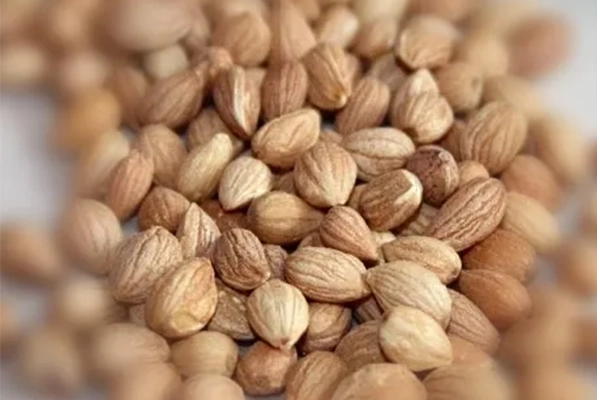
Where to Buy Mahleb?
Finding authentic, high-quality Mahleb can be a challenge, especially for those outside regions where the spice is traditionally used. Because it’s not yet a common pantry item in many parts of the world, knowing where to buy it — and what to look for — makes a real difference in flavor, freshness, and safety.
The best choice is always to source from trusted producers with direct access to high-grade harvests. That’s why many chefs, bakers, and food distributors turn to direct suppliers based in the heart of the production regions.
At mehlow, we are proud to be a producer, exporter, and wholesale supplier of premium Mahleb seeds. Our product is cultivated in Iran’s sun-rich orchards, processed under strict quality controls, and packaged in hygienic, export-grade materials. Whether you’re a home cook, a commercial bakery, or a bulk importer, our Mahleb is available in both retail and bulk formats to suit your needs.
Due to rising demand, low-quality or counterfeit versions sometimes circulate on the market. That’s why it’s essential to verify origin, harvest date, and ensure your supplier offers full traceability and compliance with food safety standards.
Looking to experience what Mahleb truly is? Visit mehlow.com and order directly from the source — fresh, authentic, and rooted in tradition.
Conclusion
From its ancient roots in the Middle East to its growing presence in modern kitchens around the world, Mahleb is far more than just a spice — it’s a cultural treasure. Its delicate flavor, rich aroma, and impressive health benefits have secured its place in traditional and contemporary recipes alike.
For those still wondering what is Mahleb, the answer lies not only in its unique taste but also in its deep connection to heritage and craftsmanship. From festive breads to creative desserts and even savory applications, this ingredient adds something truly special to every dish.
As global interest in Mahleb spice uses continues to rise, quality and authenticity become more important than ever. That’s why choosing the right supplier is key. At mehlow, we are committed to delivering premium Mahleb — cultivated, processed, and packaged with care in the land of the sun.
Whether you’re a home baker, a chef, or an importer looking for high-quality seeds, you can trust us to provide the golden seed of tradition, ready to inspire your next recipe.
FAQ about Mahleb
What is Mahleb made from?
Mahleb is made from the inner kernel of the St. Lucie cherry seed (Prunus mahaleb). The hard pit is cracked open, and the small beige kernel inside is ground into a fine, aromatic spice.
What does Mahleb taste like?
It has a unique flavor that blends notes of bitter almond, cherry, and vanilla. The taste is warm, floral, and slightly sweet — perfect for pastries and desserts.
Is Mahleb safe to eat?
Yes, when used in small culinary amounts, Mahleb is safe for most people. It’s been used for centuries in traditional baking. However, it should not be consumed in large or concentrated doses.
How do you use Mahleb in cooking?
You can use it in small quantities in bread, cookies, cakes, custards, and rice dishes. Always grind the seeds fresh for the best flavor.
Where can I buy high-quality Mahleb?
You can buy premium, export-grade Mahleb directly from mehlow.com, where it’s produced, processed, and packaged at the source in Iran.
What are the health benefits of Mahleb?
Mahleb is rich in antioxidants, fiber, calcium, and iron. It may support digestion, reduce inflammation, and contribute to overall wellness.

